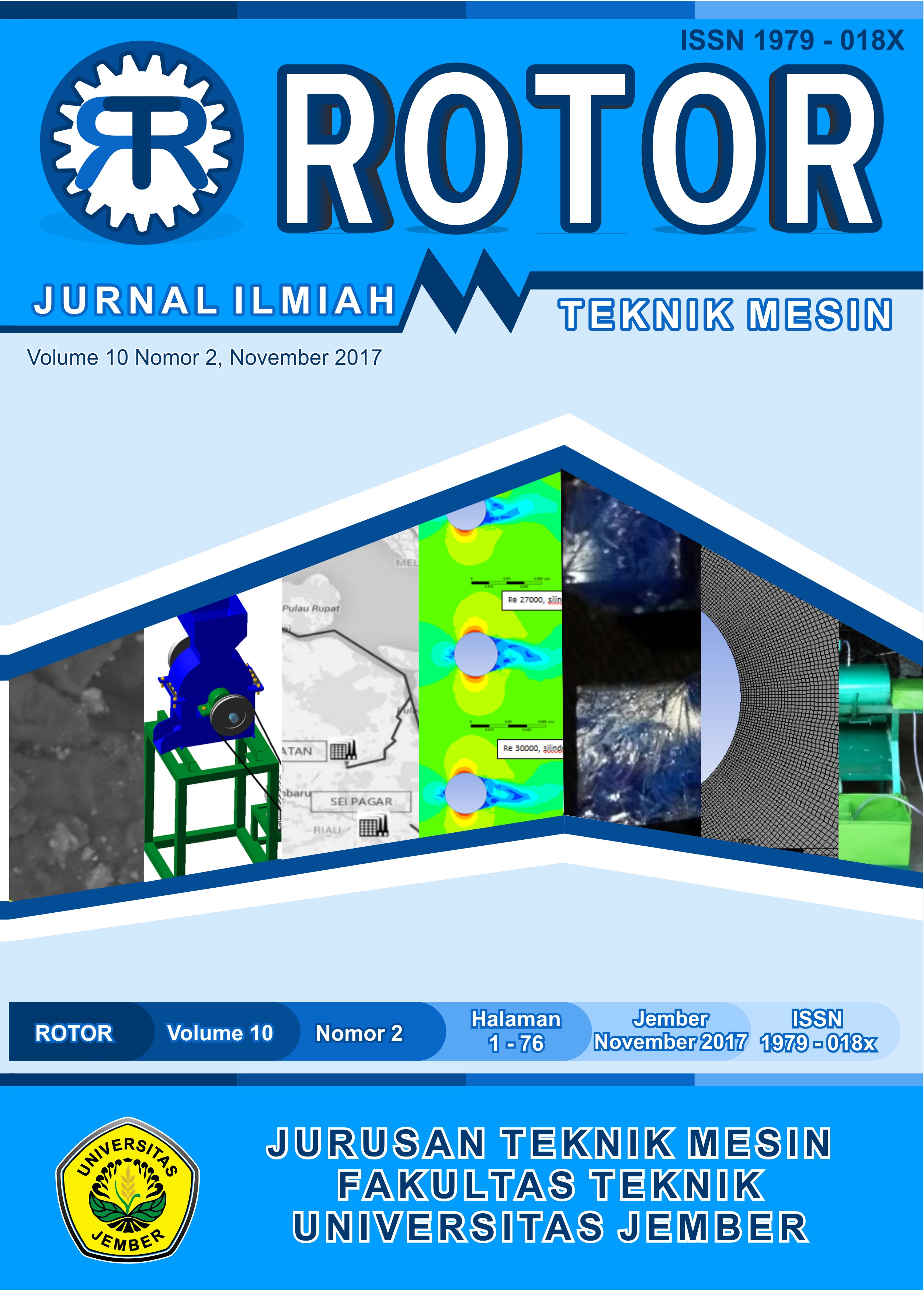SIMULASI PENGARUH STEAM-TO-CARBON RATIO DAN TUBE OUTLET TEMPERATURE TERHADAP REAKSI STEAM REFORMING PADA PRIMARY REFORMER DI PABRIK AMONIAK
DOI:
https://doi.org/10.19184/rotor.v10i2.6393Abstract
Steam reforming, the reaction in Ammonia plant between natural gas and H2O becoming H2 and CO/CO2, is occurred in Primary Reformer and being completed in Secondary Reformer. In Primary Reformer, the reaction commonly occurred at 450-800oC and 36 bars. The endothermic reaction occurred in Ni-based catalyst inside the tube. The heat for this reaction came from the heat of reaction of combustion in the furnace (outer-tube). The flow of H2 will increase along with the increasing flow of the feed gas and the heat transferred from outer-tube to inner-tube. In the other side, there will be energy increasing. So there’s a need of optimization. The need of energy influenced by many parameters e.g. Steam-to-Carbon Ratio (S/C) and Tube Outlet Temperature (Tout) of Primary Reformer. Commonly S/C is 3.20 and maximum Tout is 800oC. That’s why; optimization was conducted by energy calculation at various S/C and Tout. Firstly, reaction and heat transfer in inner-tube and outer-tube were modeled, so we can get the data of temperature and gas composition outlet inner-tube. Then, energy consumption which came from process gas, fuel gas and steam generation was calculated. The range of S/C 2.70-3.70 and Tout 700oC-800oC were chosen for the simulation. The simulation result shown that the need of energy per kmol-H2 outlet Primary Reformer at S/C 3.20 and Tout 800oC was 573.11 MJ/kmol-H2. The need of energy per kmol-H2 outlet Primary Reformer at S/C 3.50 and Tout 780oC (20oC below common Tout) was 573.01 MJ/kmol-H2. It means that decreasing Tout (for tube lifetime increasing) must be compensated with increasing S/C.
Keywords: Primary Reformer, Steam to Carbon Ratio, Tube Outlet Temperature

